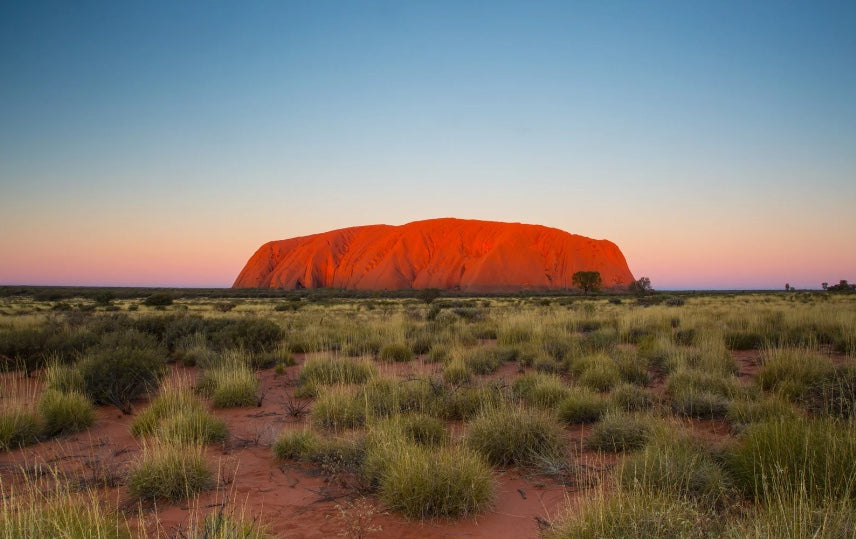
Opals in Dreamtime: The Sacred Stories and Origins of Australia's Precious Gem
Share
Acknowledgement of Country
In the spirit of reconciliation, Iona Opal acknowledges the Traditional Custodians of Country throughout Australia and their connections to land, sea, and community. We pay our respect to their Elders past and present and extend that respect to all Aboriginal and Torres Strait Islander peoples today.
Indigenous Australians have a rich oral history spanning over 60,000 years, long before European settlers arrived. This history includes Dreamtime stories about opals, which existed in their cultural narratives long before opals were 'officially' discovered by Europeans at Listowel Downs near Adavale, Queensland, in 1872, marking the start of their entry into the global jewellery market.
Indigenous Australians hold a deep spiritual connection to opals, as they do to the land. Below are a few Dreamtime stories that recount the Indigenous origins and cultural significance of opals, as told by the Elders of opal-bearing regions.
South Australian Opal Dreamtime
For the Aboriginal people around Andamooka in South Australia, it is believed that opal was created when an ancestral being was conveyed to earth via a great rainbow. Where the rainbow touched the land, it formed rocks and pebbles that glittered in the sun with all the colours of the rainbow.
As tribes gathered, the Dreamtime creator explained the lore of the land and the people, which needed to be followed to establish their way of life. The outcrops of opal were considered sacred and, due to their mystical properties, were used for ceremonial purposes. They believed that the rainbow would appear again one day. The first documented European discovery of opal in South Australia occurred on the north-western bank of Lake Torrens in 1930 at Andamooka.
Approximately 400km north of Andamooka is Coober Pedy, which is renowned for producing most of the world’s seam opal from a 50km long opal field.
NSW Opal Dreamtime
Black opal was discovered at Lightning Ridge, New South Wales, in the late 19th century, not at Mintabie. Mintabie, located in South Australia, is known for producing high-quality dark-based and crystal opals. A fascinating Dreamtime story comes from the Yuwaaliyaay people of Wallangulla (Lightning Ridge) country.
In this tale, the supreme spirit Bhiamie and his two wives, Birring Ooloo and Cunnum-Biellie, swam in a spring, unaware that they were being stalked by Gurria, the Great Crocodile, who sought to claim their spirits. Gurria swallowed the wives whole and swam down the Narran River. Bhiamie tracked Gurria to a lake and speared him at Weetaliba water crossing. As Gurria lay dying, his body caused the earth beneath him to give way, creating two holes: Corcoran Lake and Angledool Lake.
As Gurria died, it rained, and a rainbow appeared. The colours of the rainbow were trapped in Gurria’s scales, which formed opal in the ground. Bhiamie freed his wives and brought them back to life.
Commercial opal mining in New South Wales began in the late 1880s at White Cliffs. It wasn't until around 1900 that Lightning Ridge became known for its rich opal deposits, and in 1905, the first shafts were dug.
Queensland Opal Dreamtime
A Dreamtime story from Central Queensland tells of the 'weeping opal,' originating from a time when a giant opal ruled over the land and its people when the world was young. This Aboriginal ancestor emerged after two tribes had been warring for so long that their weapons were either broken or lost, causing the warriors to hurl boulders at each other.
One warrior threw a boulder so hard that it became stuck in the sky. The boulder expanded until it burst, revealing the colours of a huge opal. As the opal spirit saw the devastation of the war, tears streamed down as rain. When the sun shone, revealing the colours of the tears, the survivors of the war saw their first rainbow.
The vast Queensland opal fields, spread across 1,000km, are the main suppliers of Boulder Opal, which is characterised by its ironstone host rock. Winton, Quilpie, Jundah, Eromanga, and Yowah are the main centres for production.
The Dreamtime stories and historical accounts mentioned here are based on oral traditions and cultural knowledge passed down through generations of Indigenous Australians, as well as documented historical records. While we strive for accuracy, the interpretation of cultural stories may vary, and some historical details are subject to differing accounts. We encourage further exploration and consultation with Indigenous communities for a deeper understanding.

